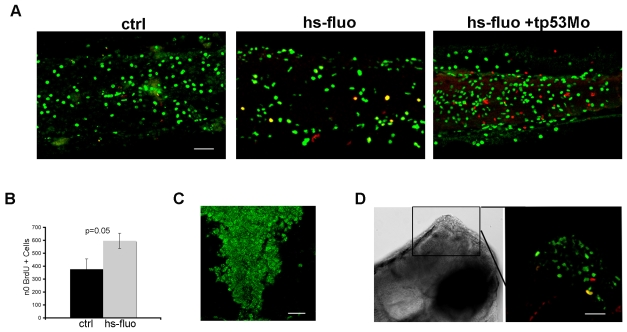Fig. 8.
The OIS phenotype is rescued by a tp53 morpholino. (A) BrdU incorporation in the inducible GFP-H-RASV12 line injected with the tp53 mo. Persistence of hyperproliferation is observed in hs-fluo embryos injected with the tp53 mo at 5 dpf (hs-fluo+tp53 mo), lateral view of the tail region. (B) Quantification of BrdU+ cells in the skin of heat-shocked 5 dfp transgenic larvae (n=5; mean±s.d.) injected with the tp53 mo (gray bar, hs-fluo) compared with control wild-type larvae (n=5; mean±s.d.) injected with the same morpholino (black bar, ctrl). (C) Immunofluorescence for γH2AX shows a diffuse DDR in the hindbrain of an hs-fluo larva at 5 dpf. (D) GFP-H-RASV12 is able to induce brain overgrowths in the absence of tp53 (left), lateral view, dorsal to the top. The right panel shows an enlargement of the boxed area stained for BrdU (green) and PH3 (red). Bars, 40 μm.

